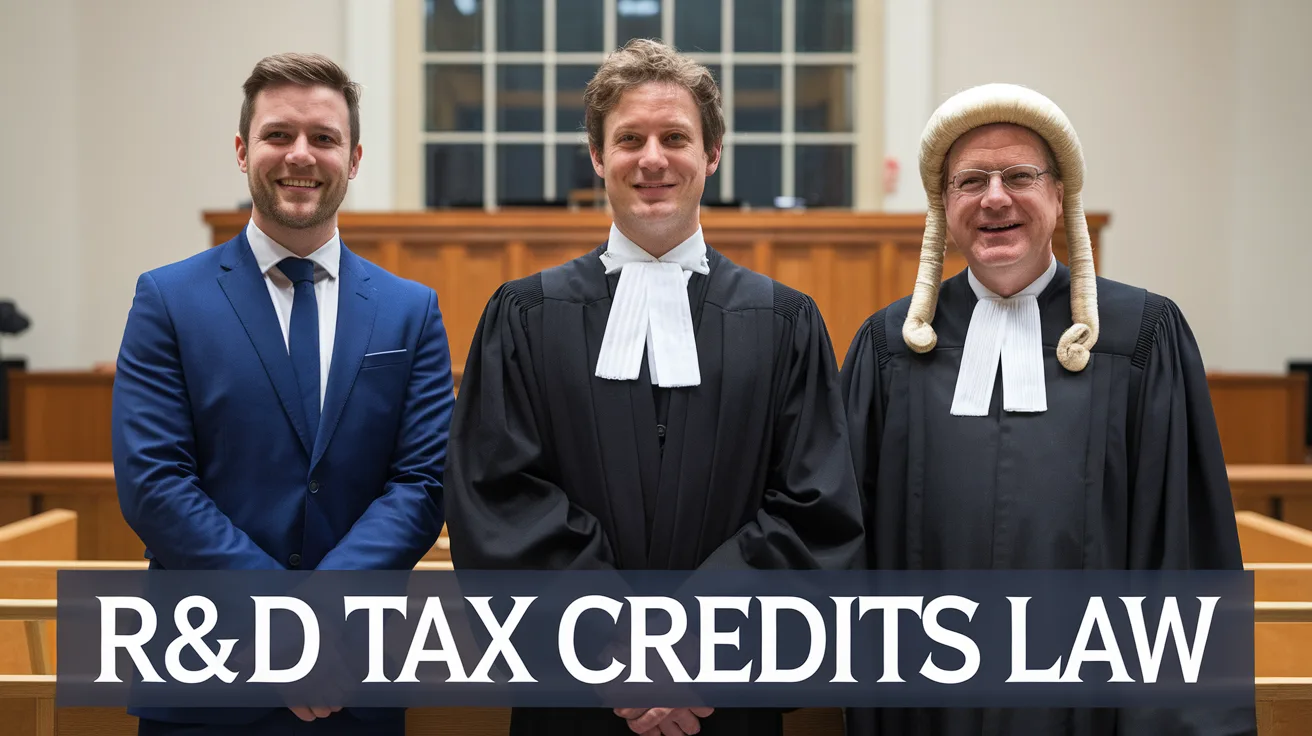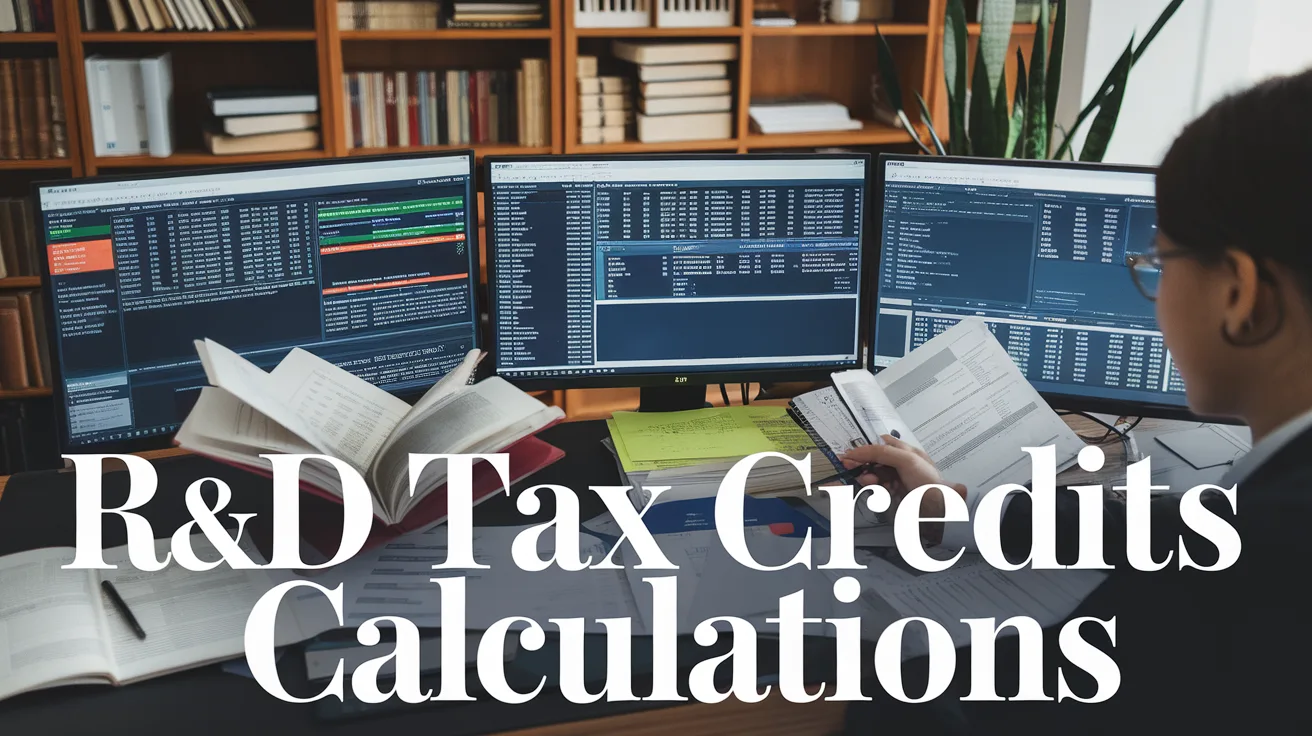R&D Tax Credits Downend Gloucestershire
R&D tax credits in Downend Gloucestershire are financial incentives designed to encourage innovation and development in small and medium-sized enterprises (SMEs). These credits can significantly reduce your tax liability or provide a cash refund, making it more feasible to invest in groundbreaking research and development.
To qualify, your project must involve advancing knowledge and capability in your field, addressing significant technological or scientific uncertainties. The project should also involve a competent professional and demonstrate a financial commitment to the development activities.
R&D Tax Credit Specialists can help you navigate the complexities of claiming these credits, ensuring you maximise your financial benefits and comply with HMRC regulations.

How Do R&D Tax Credits Benefit Downend Businesses?
R&D tax credits provide financial relief for businesses in Downend that invest in innovation, allowing you to reclaim a portion of your research and development expenses. This support can significantly boost your company’s financial health and drive growth through continuous improvement.
Financial Advantages
R&D tax credits can offer substantial financial benefits by reducing your corporation tax liability or providing a cash payment if your business is loss-making. This additional capital can be crucial for funding further research and development projects, ensuring that your business remains financially resilient and capable of sustaining long-term innovation.
Competitive Edge in Innovation
By leveraging R&D tax credits, your business can gain a competitive edge in the market. The extra funds can be reinvested into cutting-edge technologies and innovative practices, enabling you to stay ahead of competitors and meet the evolving needs of your customers. This continuous drive for innovation is essential for maintaining and growing your market share in a dynamic business landscape.

Which Industries Commonly Claim R&D Tax Credits?
Technology Sector, manufacturing, life sciences, and others frequently claim R&D tax credits. These industries are known for their significant investment in innovation and development.
Technology Sector
The technology sector is a leading claimant of R&D tax credits. Companies in this industry often invest heavily in software development, artificial intelligence, and data analytics, making them prime candidates for these incentives.
Manufacturing
Manufacturing firms are also common claimants, particularly those involved in advanced technologies and automation. These companies often undertake extensive research to improve production processes and develop new materials.
Life Sciences
In the life sciences sector, R&D tax credits are crucial for companies working on pharmaceuticals, biotechnology, and medical devices. The high costs of clinical trials and product development make these credits especially valuable.
Others
Other industries, such as renewable energy and construction, also benefit from R&D tax credits. These sectors often engage in innovative projects that push the boundaries of technology and sustainability.

What Qualifies as R&D Under UK Tax Law?
R&D under UK tax law refers to activities that seek to achieve an advance in science or technology through the resolution of scientific or technological uncertainty. To qualify, the work must not just be routine, but must involve genuine innovation and experimentation.
Qualifying Activities
Research and Development (R&D) includes projects aimed at creating new products, processes, or services, or improving existing ones. For instance, developing new software, enhancing manufacturing processes, or creating innovative medical devices all qualify. If your project involves substantial scientific or technical challenges and is not a simple extension of existing knowledge, it likely qualifies.
Excluded Activities
Certain activities are explicitly excluded from qualifying as R&D under UK tax law. Examples include market research, management studies, and quality control. Routine data collection and analysis, as well as the creation of artistic or literary works, also do not qualify. It’s important to distinguish between activities that involve genuine innovation and those that are part of standard business operations.
When in doubt, consult with a tax advisor to ensure your activities align with the criteria set by HMRC.

How Are R&D Tax Credits Calculated?
R&D tax credits are calculated based on the eligible costs you incur during your research and development activities. These costs typically include staff salaries, materials, and certain external expenses.
SME Scheme
Under the SME Scheme, you can claim up to 130% of your eligible R&D costs. This means if you spend £100,000 on R&D, you can claim £130,000, which can significantly reduce your corporation tax liability. The SME Scheme is designed to support smaller businesses with fewer than 500 employees and a turnover or balance sheet of less than £100 million.
RDEC Scheme
For larger companies, the RDEC Scheme (Research and Development Expenditure Credit) applies, you can claim a credit of 13% of your eligible R&D costs. This credit can be offset against your corporation tax liability or, if your company is loss-making, you can receive a cash payment from HMRC. The RDEC Scheme is more complex and is intended for companies with over 500 employees or a turnover exceeding £100 million.

Recent Changes to UK R&D Tax Credits
The UK Government has introduced several updates to the R&D Tax Credits scheme, reflecting the ongoing commitment to support innovation and research in the country. These changes aim to make the scheme more accessible and beneficial for businesses.
Policy Updates
- Increased Relief for SMEs: The SME relief rate has been raised, providing more financial support for smaller companies.
- New Digital Technologies Focus: The scheme now places a stronger emphasis on digital technologies, encouraging investment in this area.
- Simplified Application Process: The application process has been streamlined to reduce the administrative burden on businesses.
These updates are designed to ensure that the scheme remains relevant and supportive of the evolving needs of businesses in the UK.
Impact on Businesses
The changes to the R&D Tax Credits scheme are expected to have a positive impact on businesses, particularly SMEs. By increasing the relief rate and simplifying the application process, more companies will be able to access the financial support they need to drive innovation and growth. This should lead to increased investment in R&D activities, fostering a more dynamic and competitive business environment in the UK.

How Can Downend Businesses Apply for R&D Tax Credits?
Downend businesses can apply for R&D tax credits by following a straightforward process and providing the necessary documentation. Here’s how you can get started:
Application Process
- Determine Eligibility: Assess whether your R&D activities qualify for tax credits. The HMRC provides guidelines to help you determine eligibility.
- Register for R&D Tax Credits: If you confirm eligibility, register your claim with the HMRC using form CT600.
- Submit Your Claim: Complete and submit the required forms, ensuring all details are accurate and supported by the necessary evidence.
Required Documentation
You will need to provide several documents to support your claim:
- Financial Statements: Include your company’s financial statements to show the costs associated with your R&D activities.
- Project Descriptions: Provide detailed descriptions of your R&D projects, explaining how they meet the criteria for tax credits.
- Cost Breakdowns: Supply a detailed breakdown of the costs incurred, including salaries, materials, and subcontractor fees.

Title: Common Pitfalls to Avoid When Claiming R&D Tax Credits
When claiming R&D tax credits, it is crucial to avoid certain mistakes that can lead to rejections or audits. Here are the key pitfalls to watch out for:
Overclaiming
Overclaiming occurs when you include ineligible costs or exaggerate the scope of your R&D activities. This can result in your claim being rejected or subject to a lengthy and costly investigation. Always ensure that the costs and activities you include in your claim are genuinely related to R&D and are supported by clear evidence.
Underclaiming
Underclaiming happens when you fail to include all eligible R&D activities and costs, resulting in a smaller credit than you are entitled to. This can happen due to a lack of awareness of what qualifies as R&D or fear of overclaiming. Review the HMRC guidelines thoroughly to ensure you are not leaving any eligible expenses out of your claim.
Documentation Errors
Documentation errors can derail your claim if you do not have the necessary evidence to support your R&D activities. This includes inaccurate records, missing invoices, or lack of detailed project descriptions. Keep meticulous records of all R&D activities, costs, and outcomes to prevent any discrepancies in your claim.

How Can Professional Advice Enhance R&D Tax Credits Claims?
Professional advice can significantly boost the success of your R&D Tax Credits claims by ensuring you maximise eligible expenses and comply with HMRC regulations. Here’s how expert guidance can make a difference in Gloucestershire.
Role of Tax Credit Specialists
- Identifying Eligible Projects: We help you identify which projects and activities qualify for R&D tax credits, ensuring you don’t miss out on potential savings.
- Compliance and Documentation: We ensure your claims are fully compliant with HMRC rules, reducing the risk of audits and penalties.
- Maximising Claims: Our specialists use their expertise to help you claim the maximum allowable expenses, often uncovering areas you might have overlooked.
Benefits of Expert Guidance
Expert guidance from R&D Tax Credit Specialists can provide several key benefits. It ensures that your claims are robust and well-supported, which can lead to faster processing and higher returns. We also stay updated with the latest changes in tax regulations, ensuring you always receive the most current advice. This can save you time, reduce stress, and ultimately, increase your financial benefits.
In Conclusion
R&D tax credits in Downend Gloucestershire are financial incentives designed to support small and medium-sized enterprises (SMEs) in their innovation efforts. By reducing your tax liability or providing a cash refund, these credits can significantly boost your business’s financial health and drive growth through continuous improvement. To maximise the benefits, it’s crucial to accurately assess your eligibility and follow the HMRC guidelines when preparing and submitting your claim.
Professional advice from R&D Tax Credit Specialists can enhance your claim by identifying eligible projects, ensuring compliance, and maximising eligible expenses. This expertise can save you time, reduce the risk of audits, and lead to higher returns. If you’re ready to leverage these incentives for your business, contact R&D Tax Credit Specialists today to get started on a more innovative and financially secure future.

